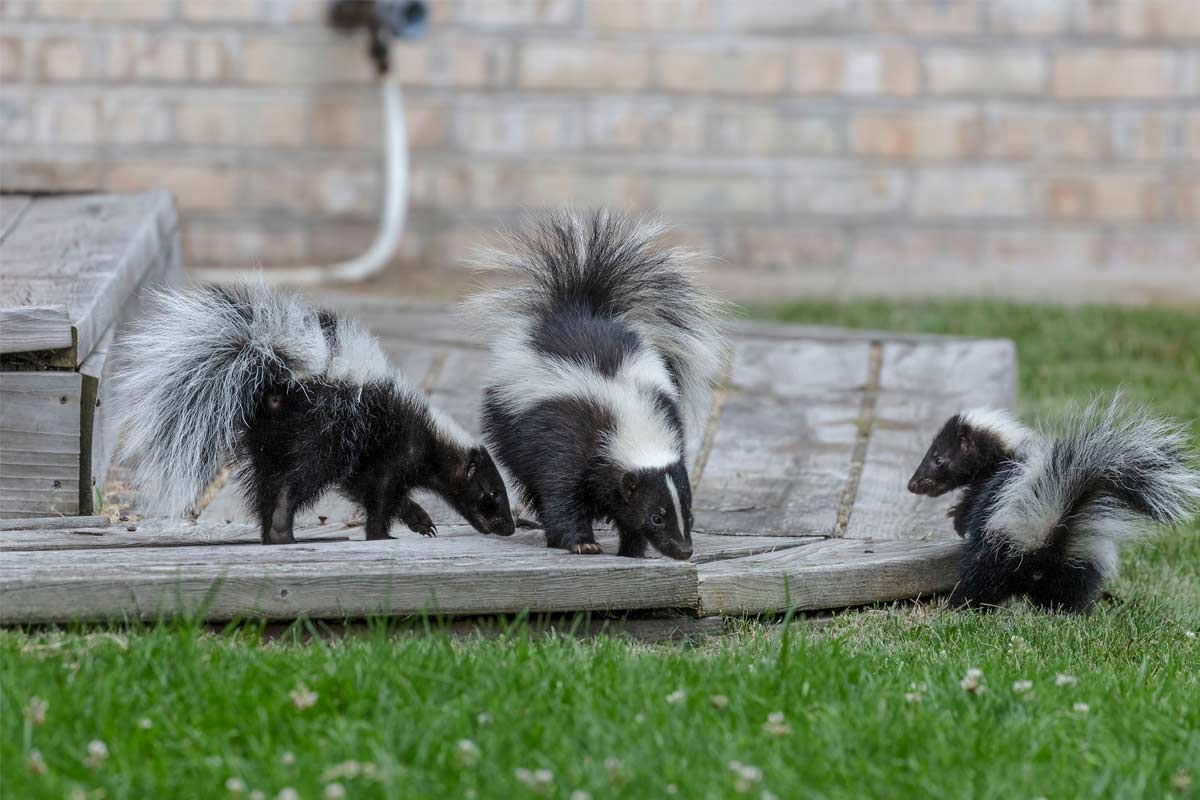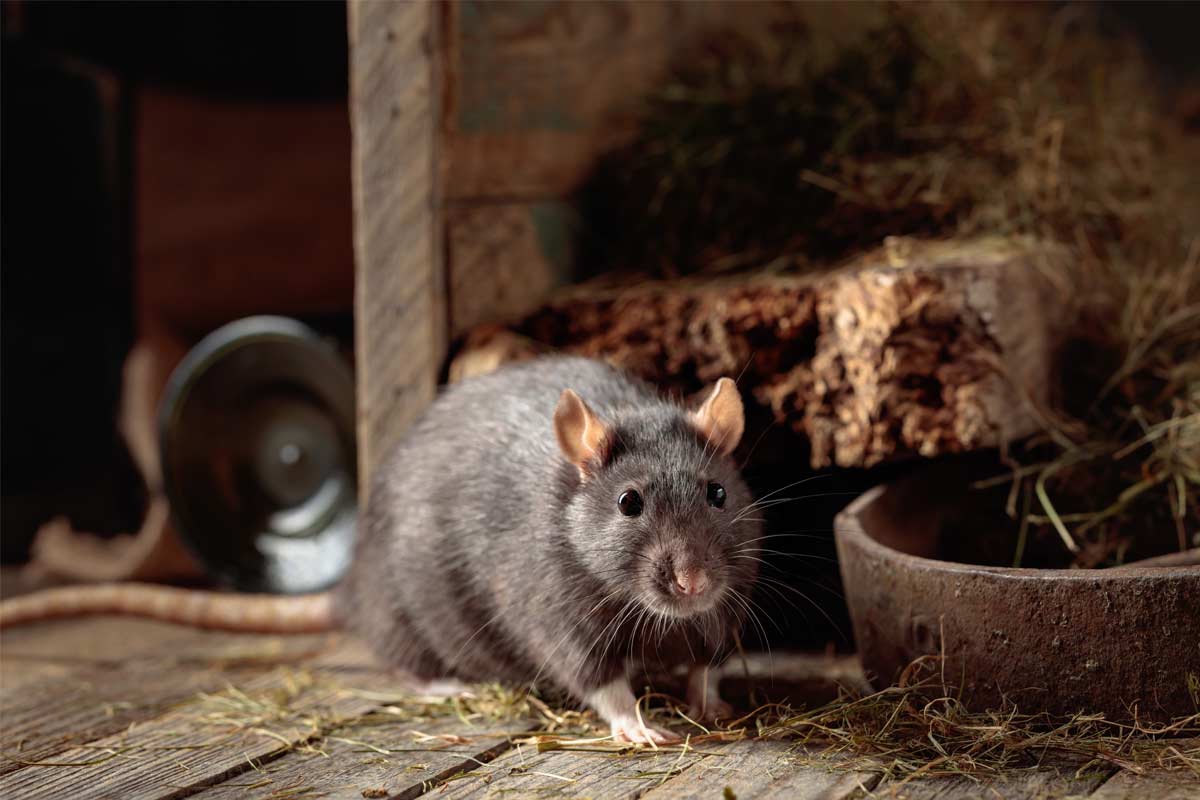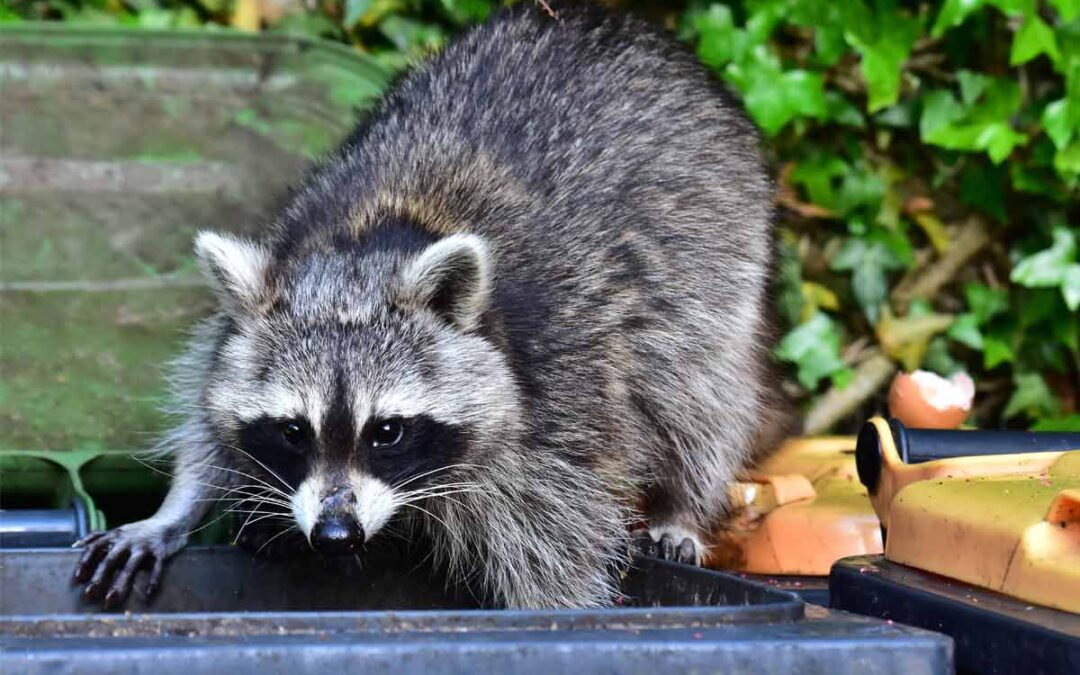Wildlife interactions are a common aspect of life, particularly in areas where human development interfaces with natural habitats. Certain species, often termed “nuisance wildlife,” can cause property damage, create health risks, or generate significant disturbances within human environments such as homes, gardens, and agricultural lands.
Identifying the specific animal responsible for a nuisance situation is paramount for selecting appropriate and effective management techniques. Different species exhibit distinct behaviours and respond differently to control methods. Here are the profiles of some of the species commonly encountered in nuisance situations across Canada, detailing their identification, typical issues caused, and recommended management approaches.
- Raccoon
- Identification: Highly adaptable mammals easily recognized by their black facial mask resembling a bandit’s disguise, ringed tail (usually 5-7 dark rings), and dexterous forepaws. Body length typically ranges from 60 to 95 cm, including the tail, with greyish-brown fur. They are primarily nocturnal.
- Common Nuisances:
- Raiding rubbish bins and composters, scattering debris.
- Damaging gardens, lawns (rolling back sod for grubs), and agricultural crops (e.g., sweetcorn).
- Gaining entry into attics, chimneys, sheds, and under decks to establish dens, potentially causing significant structural damage and leaving behind hazardous waste.
- Carrying diseases transmissible to humans and pets, such as rabies (though prevalence varies regionally) and raccoon roundworm (Baylisascaris procyonis).
- Creating noise disturbances, particularly during mating season or when young are present in a den.
- Common Management Strategies:
- Secure rubbish bins with tight-fitting lids or locking mechanisms; store indoors if possible.
- Install chimney caps and securely seal potential entry points into buildings (attics, soffits, vents) using sturdy materials like heavy-gauge wire mesh or sheet metal.
- Remove potential food sources like fallen fruit, pet food left outdoors, and birdseed spillages.
- Employ exclusion techniques, such as installing one-way doors over den entrances after ensuring no young are trapped inside (typically late spring/early summer). Professional assistance is often recommended.
- Modify habitats by trimming tree branches that provide roof access and clearing dense brush near buildings.
- Eastern Grey Squirrel
- Identification: Medium-sized rodent with a prominent bushy tail, typically grey but can also be black (melanistic phase common in many Canadian urban areas). Approximately 38-52 cm long, including the tail. Highly agile climbers, active during the daytime (diurnal).
- Common Nuisances:
- Raiding bird feeders, consuming large quantities of seed.
- Entering attics and wall cavities to nest, potentially chewing electrical wiring (fire hazard) and damaging insulation.
- Burying nuts in lawns and gardens, sometimes digging up bulbs or seedlings.
- Gnawing on wooden structures, siding, decking, and outdoor furniture.
- Stripping bark from trees.
- Common Management Strategies:
- Use squirrel-proof bird feeders or install baffles on feeder poles.
- Trim tree limbs at least 2-3 metres away from rooflines to prevent access.
- Seal potential entry points into buildings with hardware cloth or metal flashing, paying close attention to roof vents, soffits, and fascia boards.
- Protect vulnerable plants or garden beds with netting or wire mesh cages.
- Live trapping and relocation may be considered, but check provincial regulations first, as relocation is often restricted or ineffective due to territoriality and homing instincts.

- Striped Skunk
- Identification: Distinctive black mammal with prominent white stripes running down its back, although patterns vary (some have one thick stripe, others two thinner ones, or even spots). Cat-sized, about 50-80 cm long including the bushy tail. Well-known for its defensive spray mechanism. Primarily nocturnal.
- Common Nuisances:
- Defensive spraying when threatened, which can affect people, pets, and permeate buildings.
- Digging shallow holes in lawns and gardens searching for grubs and insects.
- Denning under porches, decks, sheds, or building foundations, potentially causing structural issues or odour problems.
- Occasionally raiding rubbish bins or consuming pet food left outside.
- Potential carriers of rabies.
- Common Management Strategies:
- Secure potential den sites by burying hardware cloth (L-shaped footer recommended) around the base of decks, sheds, and porches. Ensure no animals are trapped inside before sealing completely.
- Remove food sources: secure rubbish, avoid leaving pet food outdoors overnight, and treat lawns for grubs if infestations are attracting skunks.
- Seal foundation cracks and openings around pipes or vents.
- Use motion-activated lighting or sprinklers as potential deterrents in specific areas.
- Avoid startling skunks; if encountered, back away slowly and quietly. Professional removal is advised if skunks are denning in problematic locations.
- Pigeon / Rock Dove
- Identification: Medium-sized bird, typically grey with iridescent neck feathers, two dark wing bars, and a dark band on the tail. Feral populations exhibit wide variations in colour (white, brown, mottled). Found globally in urban environments.
- Common Nuisances:
- Accumulation of corrosive droppings on buildings, statues, vehicles, and walkways, causing aesthetic damage and potential health risks (histoplasmosis, cryptococcosis).
- Nesting on ledges, roofs, balconies, and inside structures (attics, warehouses), creating messes with nesting materials and droppings.
- Blocking gutters and drains with nesting debris.
- Potential transmission of parasites like bird mites.
- Noise from cooing and flock activity.
- Common Management Strategies:
- Install physical deterrents on ledges and roosting surfaces: bird spikes, taut wires, netting, or sloping covers.
- Block access to potential nesting sites (e.g., netting off eaves, sealing openings into attics).
- Reduce food availability by cleaning up spills and securing rubbish bins. Discourage public feeding.
- Employ visual or auditory scarers (e.g., reflective tape, predator decoys, sonic devices), though effectiveness may be temporary as birds habituate.
- Regular cleaning of affected areas (using appropriate safety precautions for droppings).
- Canada Goose
- Identification: Large waterfowl recognised by its long black neck, white “chinstrap” marking, brownish-grey body, and black tail feathers. Found near water bodies, parks, golf courses, and agricultural fields. Populations have increased significantly in many urban and suburban areas.
- Common Nuisances:
- Large accumulations of droppings on lawns, pathways, docks, and recreational areas, creating unsanitary conditions and aesthetic issues.
- Overgrazing on lawns, parkland, and crops, leading to turf damage.
- Aggressive behaviour, particularly during nesting season (spring), when defending nests or goslings.
- Potential hazards near airports and roadways.
- Common Management Strategies:
- Habitat modification: Allow shoreline vegetation to grow tall or install low fencing (at least 75 cm high) along water edges to deter geese from easily walking ashore. Reduce large expanses of manicured lawn near water.
- Employ visual deterrents like flags, Mylar tape, or predator decoys (e.g., coyotes, owls), moving them frequently. Trained goose-herding dogs can be effective in larger areas.
- Use noise deterrents like propane cannons or pyrotechnics (permits may be required; check local bylaws).
- Apply registered chemical repellents to turf areas (often taste or sight-based).
- In specific managed situations, egg addling or oiling programs (requiring federal permits from Environment and Climate Change Canada) can help control population growth humanely.
- mr
- Identification: Small rodent, typically 12-20 cm long including the tail. Grey or light brown fur, large ears, pointed snout, and a tail nearly as long as its body. Primarily nocturnal, often heard scurrying within walls.
- Common Nuisances:
- Contaminating food supplies and preparation surfaces with droppings and urine.
- Gnawing on various materials, including wood, paper, insulation, and potentially electrical wiring (fire risk).
- Carrying diseases and parasites (e.g., Salmonella, Hantavirus though less common than with deer mice).
- Creating nesting sites within walls, attics, furniture, and stored goods.
- Rapid reproduction leading to large infestations quickly.
- Common Management Strategies:
- Seal entry points: Inspect foundations, walls, utility entry points, and door/window seals. Seal cracks and holes larger than 6 mm (1/4 inch) with steel wool, caulk, or cement.
- Store food (including pet food) in rodent-proof containers (glass, metal, heavy plastic). Maintain high standards of sanitation, cleaning up spills and crumbs promptly.
- Use snap traps, multiple-catch live traps, or electronic traps placed along walls where mice travel. Check traps frequently.
- Reduce clutter indoors and outdoors to eliminate potential hiding and nesting places.
- Consider professional pest control services for persistent or large infestations, which may involve strategic baiting programs (use with caution, following label directions precisely, especially around children and pets).

- Norway Rat
- Identification: Larger and stockier than the house mouse, typically 30-45 cm long including the tail. Brown or greyish-brown fur, blunt snout, small ears relative to head size, and a scaly tail shorter than its body length. Often found at lower levels of buildings, in burrows, or sewer systems.
- Common Nuisances:
- Significant property damage through gnawing on structures, pipes, insulation, and electrical wiring.
- Contamination of food and water sources with faeces and urine.
- Transmission of serious diseases (e.g., Leptospirosis, Salmonellosis, Rat-bite fever).
- Creating burrows that can undermine foundations, sidewalks, and landscaping.
- Preying on poultry or other small animals.
- Common Management Strategies:
- Eliminate food sources: Secure rubbish in metal or heavy-duty plastic bins with tight lids, clean up spilled grain/feed, do not leave pet food outside.
- Remove harbourage: Clear debris, woodpiles, dense vegetation near buildings. Store materials off the ground.
- Rodent-proofing: Seal entry points larger than 1.25 cm (1/2 inch) with durable materials like concrete, sheet metal, or heavy-gauge hardware cloth. Protect vulnerable pipes with metal guards.
- Trapping: Use larger snap traps or live traps designed for rats, placed strategically along runways (walls, beams). Pre-baiting traps (placing bait without setting the trap initially) can increase success.
- Professional pest control is highly recommended for rat infestations due to the associated health risks and difficulty of complete eradication. Baiting programs are common but require careful placement and management.
- Bats
- Identification: Bats are mammals with true flight, typically small, furry bodies with leathery wings. They are nocturnal insectivores, requiring expert knowledge for identification. Some Canadian bat species, like the Little Brown Bat, are endangered due to White-Nose Syndrome.
- Common Nuisances:
- Accumulation of guano and urine in roosting areas (attics, walls), causing strong odours and potential structural damage or health concerns (histoplasmosis risk from guano dust).
- Noise (squeaking, scratching) from colonies within structures.
- Potential for bats to accidentally enter living spaces.
- Public health concern regarding rabies transmission (although rare, any bat contact warrants medical advice).
- Common Management Strategies:
- Identify entry/exit points used by bats (often small gaps high on structures). Observe at dusk to see where they emerge.
- Humane exclusion is the preferred method: Seal all potential entry points except the primary ones. Install one-way exclusion devices (e.g., tubes, netting) over the main exits. These allow bats to leave but not re-enter.
- Timing is critical: Exclusion should not be done during the maternity season (typically May to late August in Canada) when flightless young could be trapped inside and die. Consult local wildlife authorities for appropriate timing.
- Never handle bats directly. If a bat is found indoors, try to isolate it in a room, open a window, and allow it to leave on its own. If contact occurs, seek medical attention.
- Professional wildlife control operators experienced in bat exclusion are strongly recommended due to the complexities and legal protections surrounding certain bat species.
If you are experiencing persistent issues with nuisance wildlife and require professional assistance for effective and humane resolution, consider contacting experienced specialists. For residents in Barrie, Orillia, Simcoe County, Midland, and surrounding areas, Mr. Pest Control offers expertise in wildlife management. You can reach us at the following numbers: (705) 739-7378 (PEST) [Barrie], (705) 326-3377 [Orillia], (705) 739-7378 [Simcoe County], and (705) 739-7378 [Midland & Area]. Our team can provide tailored solutions for your specific wildlife challenges.



